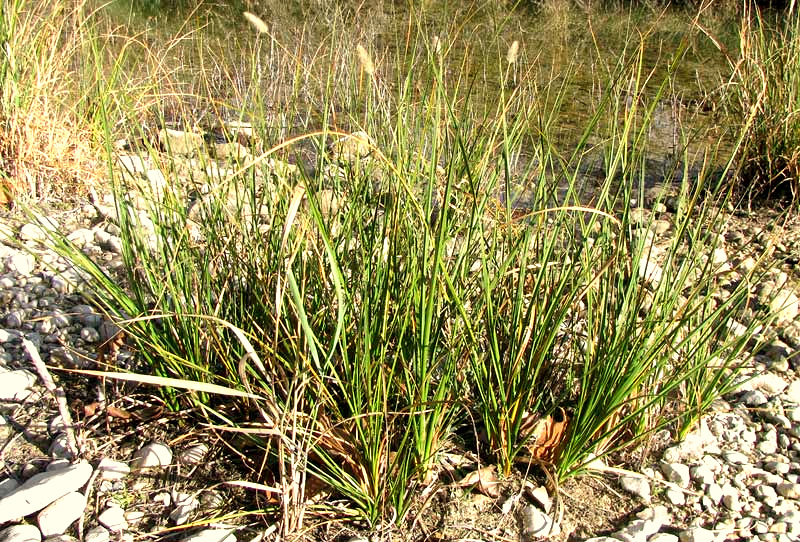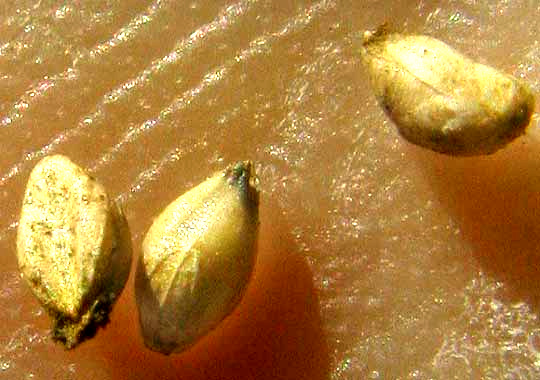Excerpts from Jim Conrad's
Naturalist Newsletter

from the December 30, 2012 Newsletter issued from the valley of the Dry Frio River in northern Uvalde County, southwestern Texas, on the southern border of the Edwards Plateau; elevation ~1750m (~5750 ft); N29.62°, W99.86°; USA
FOXTAIL ALONG THE RIVER
Nowadays much of the landscape is the color of winter, dun colored, a subdued but pretty hue especially where there are broad expanses of prairie grass. We do have plenty of greenness here to look at, though, because our two dominant trees, Ashe Junipers and Texas Liveoaks, green the hillsides. Though the vast majority of our grasses are dun colored, along the banks of the little Dry Frio River behind the cabin there's one grass species with stiff, green leaves bucking the trend, obviously a perennial, and you can see it above.
With those fuzzy heads atop long stems held above the knee-high clump of blades they couldn't be anything but what's generally called foxtail grass or bristlegrass, genus Setaria. However, the foxtail species I'm most familiar with are herbaceous and now are winter-colored. Who is this foxtail that stays green into the winter?
The most obvious field mark distinguishing this foxtail species from the other 32 or so Setaria species found in the US -- of which about a third are invasive non-natives -- is that it is a perennial. However, several other foxtail species also are perennial.
Most of the heads visible in the photograph have already shed their achene-type fruits, but down among the blade bases there was a head with flowers. You can see the feathery, pollen-collecting stigmas atop those flowers below:

That picture shows that several bristles arise below each oval spikelet, not just three or fewer, which is the case with some species. Also, if you look closely you can see that the bristles bear very tiny barbs pointed outward, toward the bristle's tip. The bristles of some species point downwards, or backwards. Also, the green spikelets are smaller than those of a lot of species, only about 2.5mm long, or 3/32nds of an inch. Comparing them with the ridges in the palm of my hand you can see how tiny the mature grains are below:

This species keys out as SETARIA PARVIFLORA, the species name parviflora meaning "small flowered." The species is native to the Americas, but now is established as an invasive weed in much of the world, so it known by several English names, including Marsh Bristlegrass, Bristly Foxtail, Knotroot Bristlegrass, and Yellow Bristlegrass. The species is regarded as the most morphologically diverse and widely distributed of all native North American foxtail species.
The small grains dropped by all the foxtail species are favored by birds who forage on the ground, especially sparrows.